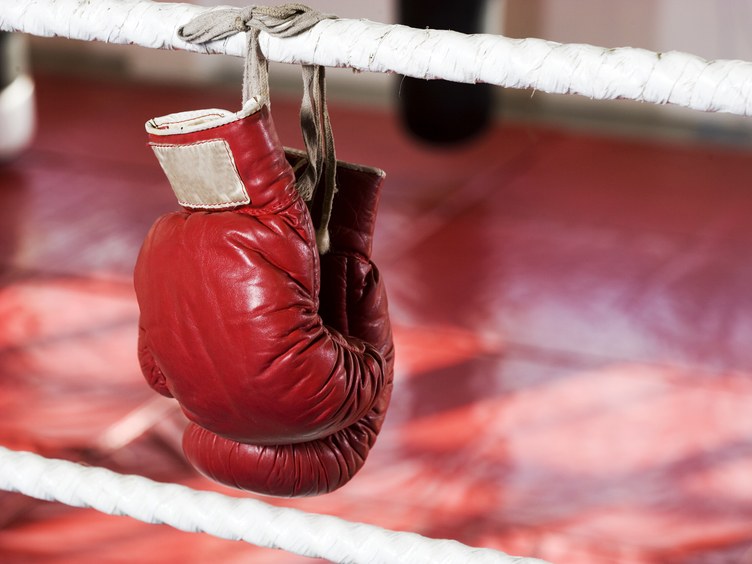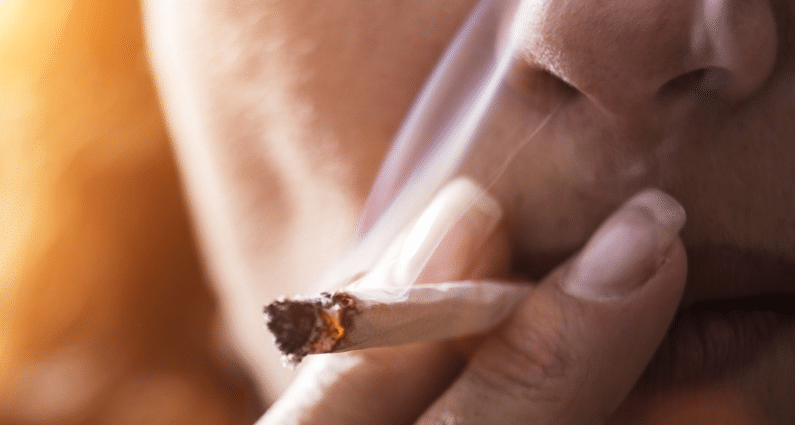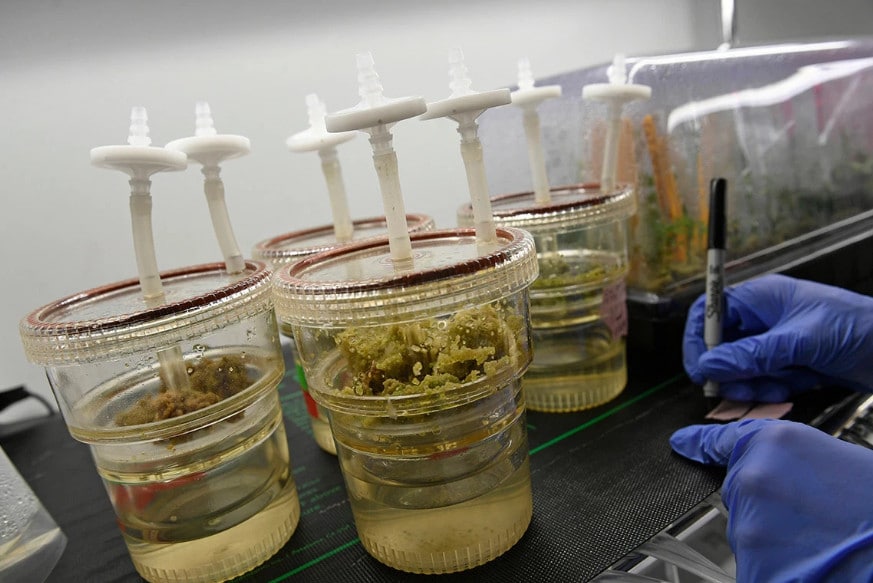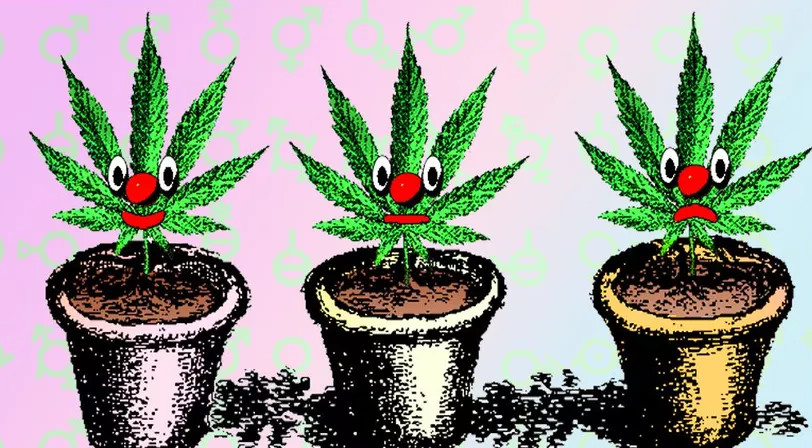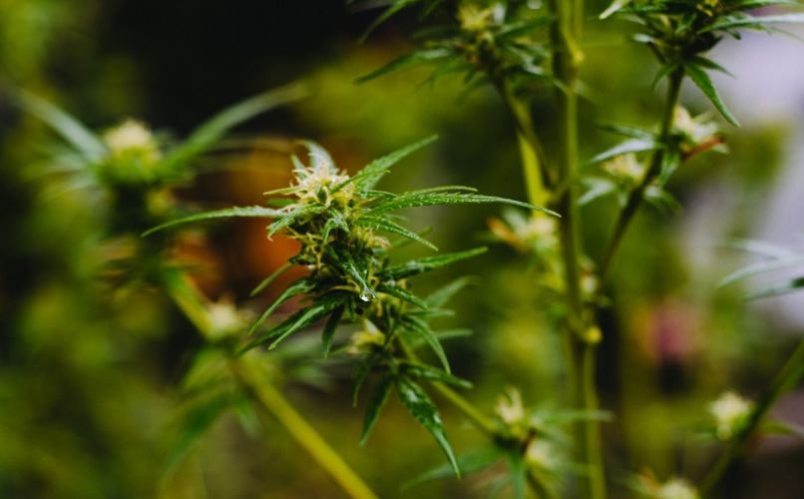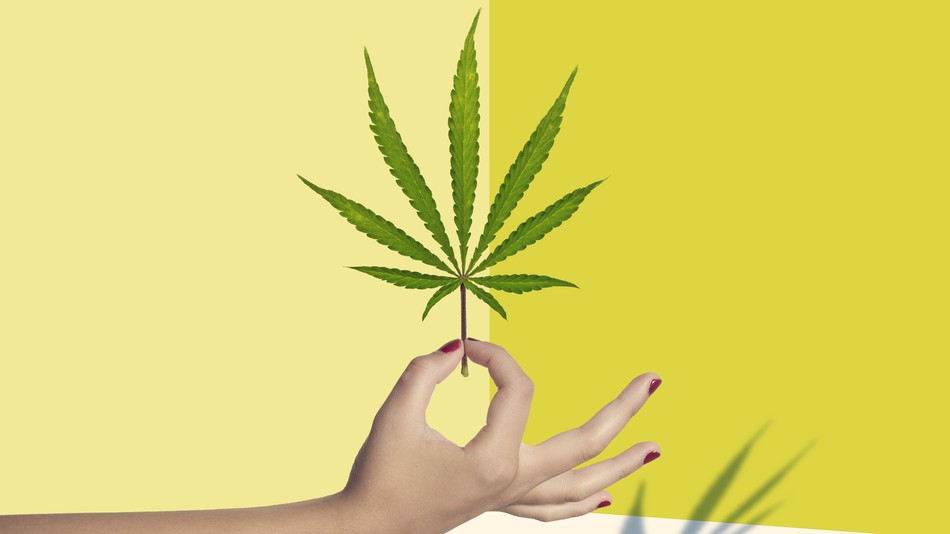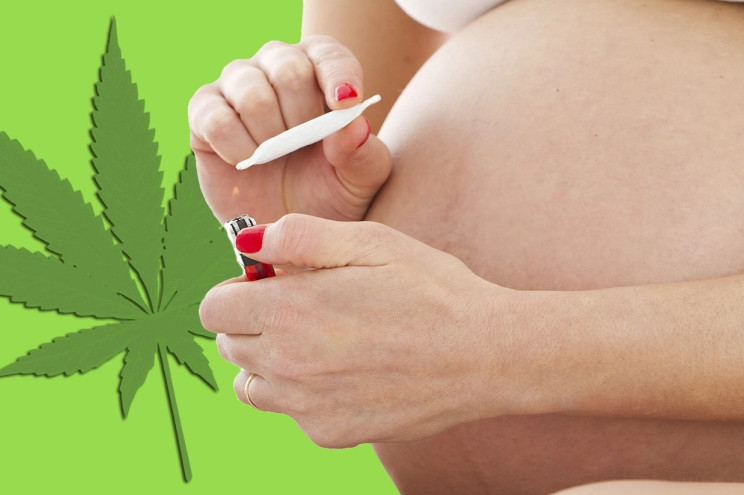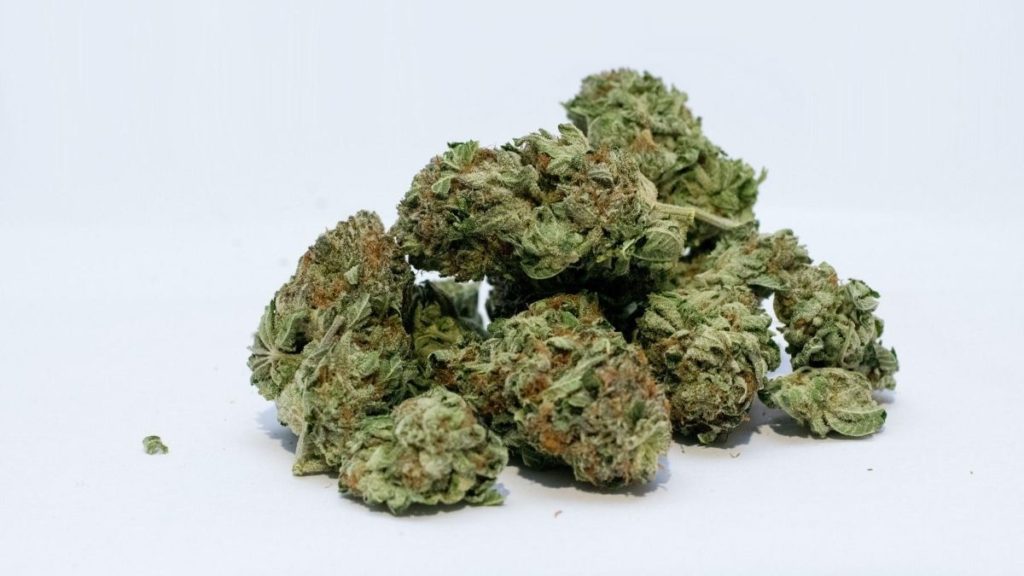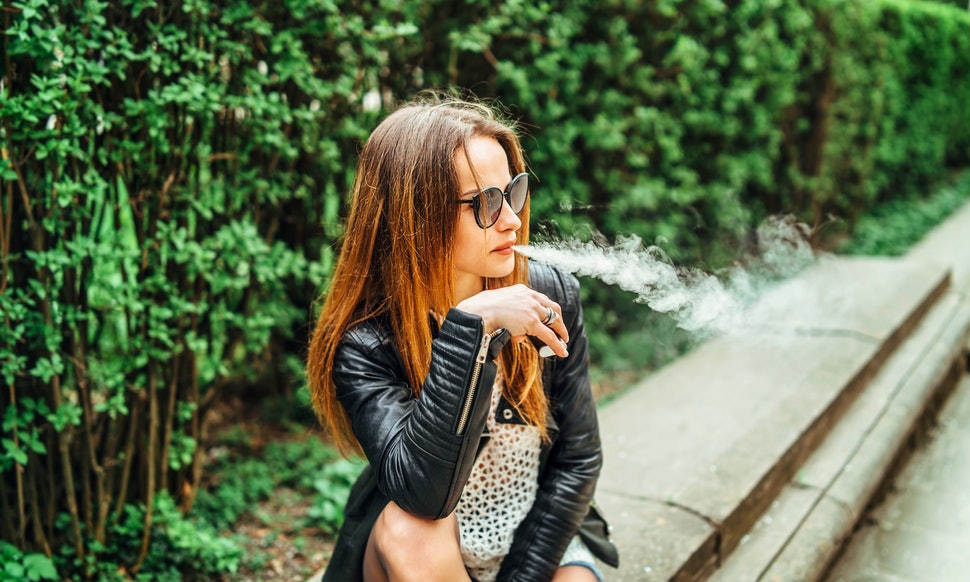Fighters know that if you land enough shots to the body, your opponent will let his guard down, and his legs will eventually give out. If you land enough shots to the head, well, you’ve seen what that looks like. Breaking down a fighter’s defenses means hitting him from varied angles, quickly, forcing him to adjust his guard and expose a glove-sized gap of flesh to pummel.
If you’re a relatively inexperienced 23-year-old who just smoked a decent amount of pot before getting in the ring, and your opponent is 2017 IMMAF World Champion Ben Bennett, also known as Mr. Alaska, there’s a pretty good chance you’re going to the be the one who gets pummeled.
In case it wasn’t clear, I’m the 23-year-old, and I got punched in the face that day. I had been working out at a MMA and boxing gym that breeds IMMAF world champions like Bennett for a few months before I finally sparred with him on a whim (he said he’d go easy on me).
But it’s tough to stay on-point when you took a few casual pulls from your bong before heading to the gym. And for that, I got some serious sense knocked into me.
I’m not a natural fighter—it’s the reason I wanted to learn. Bennett is shorter than me, and I’d guess about 30 pounds lighter. But I’d consider him the type of man who you’d probably only fight if you are extremely fit, or extremely drunk, or if you’re me, and you think it might be a fun challenge. The buzzer sounded the beginning of the round, and Bennett was kind enough to have me chase him around the ring, forcing me to attack rather than throw meaningless shots.
Two minutes in, he started punching back. I was against the ropes doing absolutely everything wrong: My guard was too low, my gloves weren’t touching my cheeks in the Tyson-esque “peek-a-boo” style that beginning boxers are taught, and my chin wasn’t tucked. I was advertising facial real estate at a low, low price. With a fraction of his strength, Bennett obliged.
The straight jab came down the pipe and connected with my nose, racking my head back as two more punches landed, though I can’t remember where. I swore my brain bounced off the back of my skull. My hands dropped with 60 seconds left in the round, but Bennett lifted them back up. “This is all part of the process,” he explained through his mouth guard. I feebly finished the round as he allowed me to take undefended swings on his torso, which was merciful but no less embarrassing. We touched gloves, I wiped the blood off my face, vowed to keep “working on it” and packed it in, still a little stoned.
I broke a cardinal rule of boxing—protect yourself at all times—because I got high before leaving for the gym. But the reality was, I smoked all the time, in a way, to protect myself at all times from everything in life that I considered nerve-racking.
Leading up to Bennett’s punch, I smoked until CSPAN became Live at the Apollo. Most of the time when I smoked I was in search of the same sensations I discovered while smoking an aluminum foil pipe in high school: euphoria, well-being, no problems. Challenging article to write? Better get high first, get some creative juices flowing. Awkward social interaction coming up? Smoke. Going to a gym where you’re by far the worst fighter and likely to get bloodied up? Smoke.
That Tuesday highlighted a pattern of behavior that spanned years. I had to change something. So, I told myself, you’re either giving up boxing like a pathetic quitter who can’t take a punch, or you’re giving up smoking pot—at least until I could figure out how to mitigate stress in a healthier way that didn’t involve a psychoactive substance. I donated the rest of mine to a friend the next day and began the foreign process of not smoking.
After years of smoking to cope with garden-variety anxiety stemming from daily stressors, I was a hapless ball of nerves my first day without pot.
Many people do find that pot chills them out the way it did for me. For others, cannabis use can actually heighten feelings of anxiety. “[Some] people who suffer from anxiety or trauma have found [cannabis] to be really helpful at mitigating their anxiety, whereas other people, it seems like it actually makes them more anxious,” John Rifkin, Ph.D., a psychologist in Boulder, Colo., who sees scores of patients who self-medicate with legal cannabis, tells SELF. “It’s kind of funny that way.”
While I don’t have a clinical anxiety disorder, I did go through periods of feeling swallowed by stress and often turned to weed to mask those feelings. Now, without my weed crutch, I actually felt mildly panicked, and pretty ill-equipped to deal with it. I even found myself Googling “symptoms of a panic attack” when at one point I suddenly felt short of breath and a freaky sensation as if the world was closing in on me, but I had no idea why.
“Part of the way we measure [the strength of a person’s dependency] is to look at to what extent are withdrawal symptoms especially problematic,” Ken Abrams, Ph.D., a psychologist who studies comorbidity between substance use disorders and anxiety disorders, tells SELF. Signs like trouble sleeping, loss of appetite, as well as nervousness and anxiety (like I dealt with after I stopped smoking) are all issues that can surface from stopping weed use, he explains, typically as a result of someone’s prior psychological dependence on it.
So, seeing how you can function without it is actually the best way to gauge whether your weed use is problematic, Abrams points out. It was clear I wasn’t functioning all that well.
It was evident that I wasn’t just smoking weed to relax; I was smoking to ignore the stress and responsibilities that I actually needed to deal with.
My wanting to have an escape from my problems wasn’t inherently a bad thing (doesn’t everyone do that in some shape or form—a Netflix binge, a nightcap?). But I wasn’t making a conscious choice to use weed to take the edge off stress; I was using it (at times when I actually needed to be alert and productive, mind you) to mask an underlying inability to confront my issues.
But taking a solid break from weed also gave me a chance to better understand the role it played in my life. The Diagnostic and Statistical Manual of Mental Disorders (DSM) says that a “problematic pattern of cannabis use” typically involves behaviors such as skipping work or social events to get high, having strong cravings, and trying unsuccessfully to cut down on cannabis use—and I certainly had some of those tendencies.
Abrams’ advice from there was pretty straightforward: He told me I needed to swap my vice for a healthier stress outlet, especially one that wouldn’t hinder my focus or productivity.
“What’s optimal is relaxation techniques,” he says. “A person can engage in anything from progressive muscle relaxation to exercise to yoga.”
I tried progressive muscle relaxation—tensing and relaxing my whole body for short intervals—any time I was working for long stretches, and I began a concurrent training program of boxing, running, and resistance training to attempt to duplicate that calm, no-problems feeling I felt with pot. I ended up dropping 10 pounds in three weeks (not deliberately, probably in part because I didn’t have the munchies) and started remembering what it felt like to feel energetic and sharp.
It’s worth noting that just making a decision to swap a vice for a healthier stress outlet won’t be an overnight fix, or even work for everyone: People with clinical anxiety disorders might need to add therapy as well as a pharmacological solution into their routine to truly alleviate anxiety symptoms, Rifkin notes. That’s a conversation to have with a physician and/or therapist.
Don’t get me wrong: I still like smoking pot. And I do have hope that I’ll be able to redevelop a more responsible relationship with it.
“If you’ve taken a break and you feel like you’re not needing to light up a new joint every two hours, you’re not really suffering from anxiety, and you’re wanting to use [cannabis] in a social context, then that shouldn’t be a problem,” Rifkin says. He adds that, with or without discipline, some people might still fall back into old habits; people who feel this is happening to them may want to consider abstaining entirely.
I’ve smoked only a handful of times since my absolute month hiatus—including on 4/20 with friends in Denver—but I no longer default to pot to help distract from or delay the things that stress me out.
About a month after Bennett clocked me, I met him in the ring again.
This time, he needed to tune up for his second professional boxing match, and I was game to be his opponent and felt (at least a little) more prepared and alert this time.
“The guy he’ll be fighting hangs his cross out a little too long, so do that to Ben now,” Bennett’s coach told me as I ducked under the ropes. (He’d essentially just asked me to expose part of my face for longer than necessary, opening up another gap for Bennett to hit.) The buzzer started the round and with trepidation, I started setting up the cross with a series of timid jabs. “Hit him! Now!” the coach barked.
And I did. Bennett hit back, of course, but I got through the fight without a bloody face. I may not be a very good boxer, but I’m a hell of lot better at it—and just about everything else—when I’m not stumbling about high. It just took a good knock to the head to help me realize it.
Credit: www.self.com

